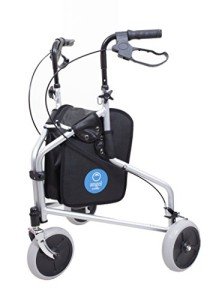This company has no active jobs
0 Review
Rate This Company ( No reviews yet )
About Us
Are You Making The Most Of Your Mobility Aid?

Understanding Mobility Aids: Enhancing Independence and Quality of Life
Mobility aids are necessary tools that help people with physical problems or conditions that prevent their capability to move freely. These aids not only promote self-reliance and improve quality of life however also provide safety and support for users in numerous environments. The landscape of mobility aids is broad, incorporating a variety of gadgets tailored to satisfy specific needs. This post intends to explore the different types of mobility aids, their benefits, considerations for use, and regularly asked concerns.

Kinds Of Mobility Aids
Mobility aids can be classified into a number of major types, each designed to assist in particular methods. Below is a table summarizing the most common mobility aids:
| Type of Mobility Aid | Description | Perfect Use Case |
|---|---|---|
| Wheelchairs | A chair mounted on wheels utilized by those unable to walk. | Long-lasting special needs or serious mobility problems. |
| Walkers | A frame that provides support for people while walking. | Post-surgery healing or balance concerns. |
| Canes | A stick used for balance and support while walking. | Mild mobility concerns or as a preventive measure. |
| Rollators | A Durable Walker equipped with wheels and typically a seat. | People requiring assistance over longer ranges. |
| Crutches | Gadget used to raise and support the body weight of a person with a leg injury. | Short-term injuries needing non-weight bearing. |
| Scooters | A motorized device for those who can sit but not walk long ranges. | Long trips and fatigue-prone individuals. |
| Lift Chairs | Recliner chairs that raise to assist users in standing up. | Elderly individuals or those with extreme discomfort. |
Benefits of Mobility Aids
The use of mobility aids extends beyond simple transport; they serve numerous crucial functions in enhancing the wellness of users:
- Independence: Mobility aids empower users to carry out day-to-day activities without relying heavily on caretakers or assistance from others.
- Safety: Many mobility aids are designed to lessen the threat of falls, supplying users Rollator With Wheels stability when walking around.
- Boosted Quality of Life: By enhancing mobility, people can take part in social activities, workout, and maintain neighborhood connections, favorably affecting their mental health.
- Access to Environments: Mobility aids can facilitate access to locations that might otherwise be challenging to browse, such as public transportation and public spaces.
- Assistance Recovery: They play a vital function in rehab following surgery or injury by promoting steady mobility and assisting healing.
Considerations for Choosing the Right Mobility Aid
Selecting the proper mobility aid can substantially affect a person’s lifestyle. Here are a number of essential considerations to remember:
- Level of Mobility Impairment: Assess the seriousness of mobility concerns to figure out the most suitable type of aid.
- User’s Physical Condition: Consider elements like weight, strength, and total health.
- User’s Lifestyle and Environment: Analyze where the mobility aid will be used frequently: indoors, outdoors, or both.
- Functional Needs: Evaluate if extra features such as storage, seating, or height adjustments are required.
- Assessment with Professionals: Always consult from healthcare specialists for assistance tailored to private situations.
Regularly Asked Questions (FAQs)
Q1: What is the difference in between a walker and a Rollator For Walking?A1: A walker is a basic frameused for assistance and balance, while a KMINA 2-in-1 Rollator Wheelchair Hybrid – Blue has wheels, offering much easier mobility and typically features additional functions such as a seat and storage. Q2: Can mobility aids be covered by insurance?A2:
Many Medical Rollator insurance plans, consisting of Medicare, might cover mobility aids if they are deemed clinically essential. It is recommended to seek advice from with your insurance company for particular information. Q3: How do I know when it’s time to use a mobility aid?A3: If you’ve experienced regular falls, relentless discomfort
while walking, or have problem finishing day-to-day activities
, it might be time to consider a mobility aid. Seek advice from a healthcare specialist for individualized suggestions. Q4: Are there mobility aids created for outdoor use?A4: Yes, numerous mobility aids are specifically developed for outdoor environments, including scooters, Outdoor Walker – why not try this out – walkers, and all-terrain wheelchairs, geared up to manage various surfaces. Q5: Can I use a mobility aid after surgical treatment, like knee replacement?A5: Yes, mobility aids such as walkers and crutches are typically suggested post-surgery to aid recovery and preserve safety as you regain
strength. Mobility aids play an important function in supporting individuals with mobilitydifficulties, facilitating independence, and improving total lifestyle. With a varied variety of alternatives readily available, it’s vital for users to evaluate their distinct needs and talk to professionals to choose the most proper aid. As technology and style continue to evolve, these aids will unquestionably become even more easy to use and efficient, promoting a more inclusive world for everyone. By understanding the different types of mobility aids and their particular benefits, people can make informed options that improve their mobility and help with a more active and fulfilling lifestyle.


